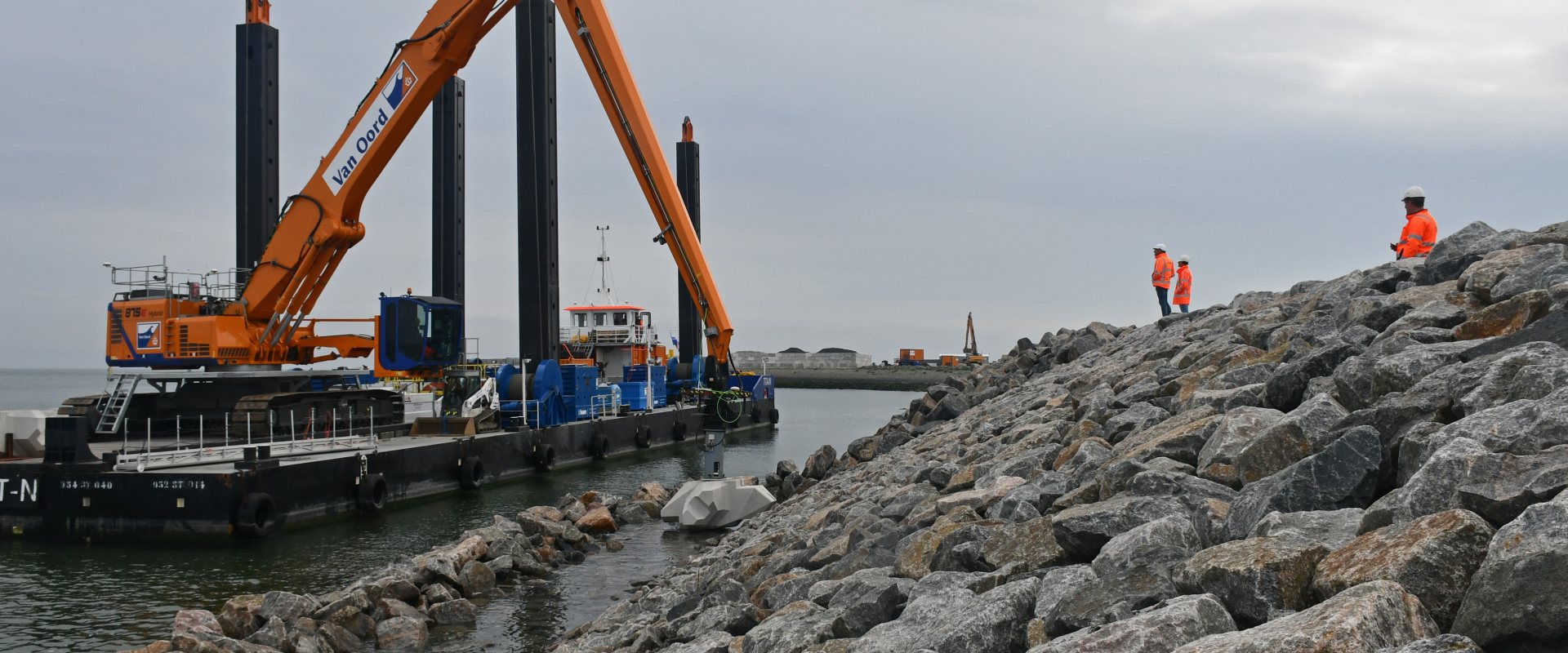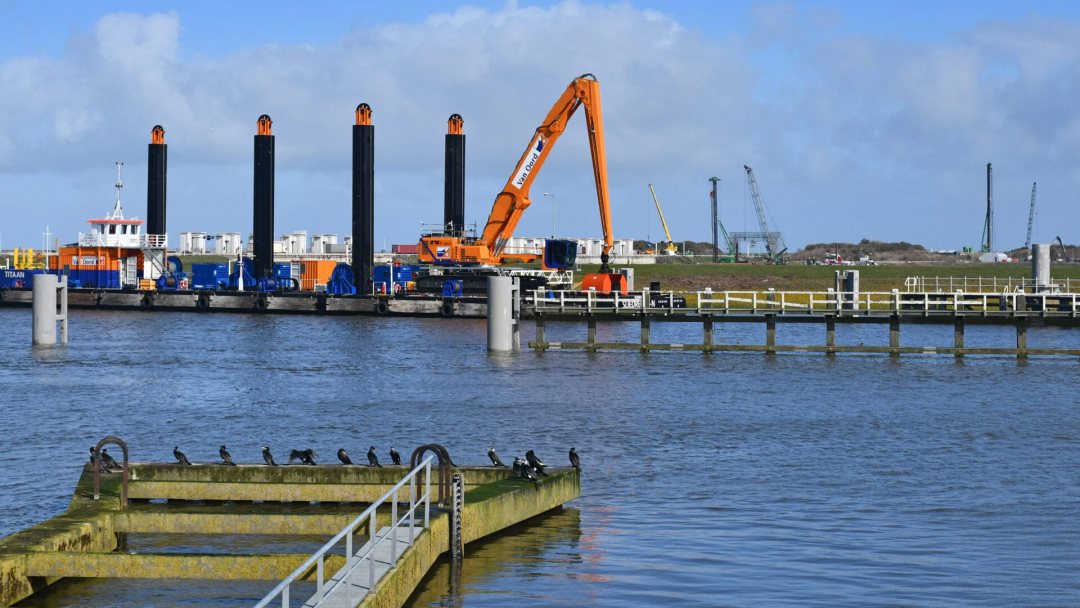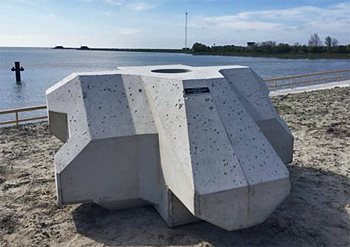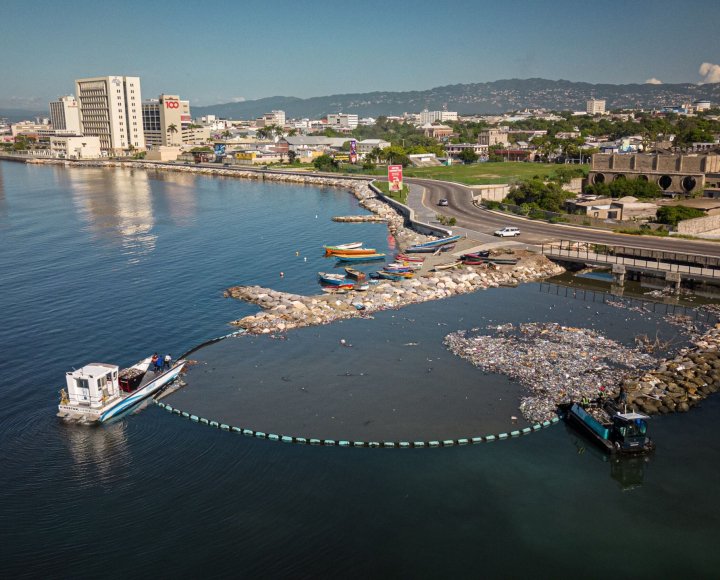
First armour Levvel-blocs on Afsluitdijk, another 74,999 to go
Construction consortium Levvel placed the first of 75,000 special designed armour blocks on the 32 km long closure dam Afsluitdijk, the Netherlands.
The placement of all 75,000 blocks is part of a major reinforcement project to heighten the dam and making it more robust to withstand overtopping. The consortium, comprising Van Oord, BAM, and Rebel, has been contracted to complete the reinforcement work by 2023.


Regular laying pattern
The Levvel-bloc is the latest version of the X-Bloc armour unit as designed by Delta Marine Consultants (DMC), a subsidiary of BAM Infrastructure. The original Xbloc has been applied worldwide since 2004 and is used to protect breakwaters and shores against waves.
DMC developed a more advanced version, the X-BlocPlus which has the same wave breaking capacity with less concrete.
Normally, armour blocks, including the X-Bloc, are placed irregularly by dumping them on the slope of a breakwater. DMC designed their latest X-Bloc version in a shape that can be tilted in a regular pattern. The advantages being that the blocks all have the same orientation and the interlocking between the units is not variable.
This single orientation allows a much easier and quicker placement of the 6,5 ton armour unit. In the Afsluitdijk project the X-BlocPlus is used under the name Levvel-bloc.


Production facility
The armour blocks are produced on land at a nearby facility where several thousand blocks have already been produced.
On 15 June the first ones where shipped to the dam on a pontoon. A crane on the pontoon placed the blocks on top of a basalt underground. The configuration of the pontoon and the crane allows a very precise placement of the blocks. This precision is important for the interlocking between the blocks to ensure a maximum stability of the layer as a whole.


New Afsluitdijk
Next to the 32 km long new wave breaking layer, the reinforcement of the Afsluitdijk also includes the expansion of the drainage pumping station allowing more discharge of IJsselmeer water to the Wadden Sea. Also the two sluices in the dam will be renewed.
The work has been ordered by Dutch national water authority Rijkswaterstaat and is carried out by consortium Levvel, including BAM, Van Oord, Rebel.
After the work has been completed, Levvel will remain responsible for maintenance for a period of 25 years. The net value of the public-private partnership (PPS) project is 550 million euro.
Additionally, a fish migration river will be constructed to restore the passage of fish between the Wadden Sea and the IJsselmeer.









